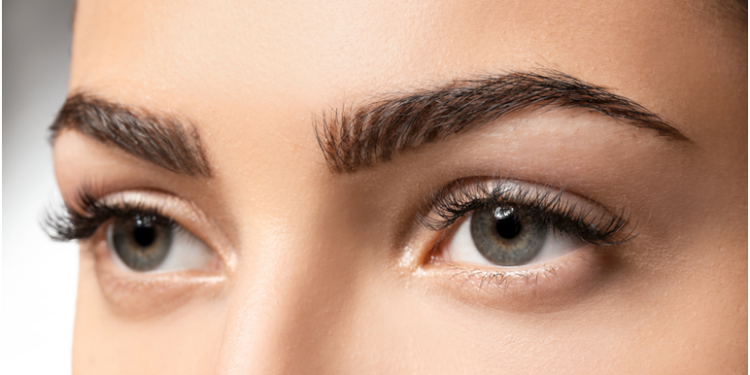In this article, Dr. Harikiran Chekuri, a Top hair transplant surgeon from Hyderabad, talks about “What are the Procedure, Cost, and Side Effects of an Eyebrow Transplant?”.
Dr. Harikiran Chekuri, the founder of Redefine center and an award-winning plastic surgeon in Hyderabad, has more than 14 years of expertise doing cosmetic surgery procedures to remodel the body, rejuvenate the face, augment the breasts, and many other treatments.
Now let’s look into the article that talks about what you must know about an Eyebrow transplant.
Using makeup products to “fill in” eyebrow hairs has traditionally been the solution for thin or sparse brows. However, a more permanent treatment, the brow transplant, is gaining popularity.
A brow transplant is a procedure in which a cosmetic or plastic surgeon transplants your hair.
While the treatment appears simple, other factors to consider, including cost, risks, and side effects. Continue reading to find out what to expect from a brow transplant and how to decide if it’s appropriate for you.
What is an eyebrow transplant?

When it comes to cosmetic surgery, an eyebrow transplant is the transfer of hair grafts from the brow area to the surrounding area. The intention is for new hairs to grow from the grafts, giving the appearance of a giant head of hair.
Procedure
The process is identical to a regular hair transplant in terms of results. Hair grafts for the brows are extracted from hairs above the ears. The hair follicles, as well as individual strands, are transferred by the surgeon. This ensures that new hairs can grow in your brows after the transferred ones fall out.
The surgeon will make small incisions in your brows at the follicle donor sites and transplanting sites after providing general anesthesia to ensure that you have the best possible outcome.
After a brow transplant, how long does it take for you to recover?
According to Dr. Harikiran Chekuri, a Hyderabad-based hair transplant specialist, A brow transplant has a relatively short healing period. Within the first few days, you’ll see some scabbing around the brows. It’s critical not to pick at these.
Following your surgery, you may be required to refrain from engaging in strenuous activity for up to three weeks. If you see any bleeding, swelling, or pus at the surgery site, contact your surgeon right away.
After a few weeks, the hairs that have been transplanted will begin to fall out. This is a very normal pattern of conduct. Your new brow hairs should begin to appear over the course of the next few months. In the meantime, it is possible that the transplanted hairs will need to be clipped to brow length.
How much does it cost?
Eyebrow transplantation is a “nonmedical” procedure. As a result, most health insurance policies do not provide coverage for it. Eyebrow transplants are similar to injectables and other cosmetic treatments.
Depending on your individual requirements, the provider you choose, and your geographic location, the cost of a brow transplant will vary. Generally, the cost per hair follicle ranges between Rs. 40 and Rs. 80, depending on the hair transplant procedure used and the health and donor locations of the strands.
An exemption to the health insurance restriction applies if your eyebrow transplant is judged necessary due to hair loss caused by an accident or a medical condition that has developed.. However, such instances are uncommon. Your insurance plan’s copays and deductibles would still be your responsibility.
In order to assist patients in covering the cost of their procedures, several cosmetic specialists offer payment options. Promotional offers, loans, and payment plans are all examples of how this might be accomplished. Before scheduling your brow transplant, inquire about these possibilities with your specialist, says Dr. Harikiran Chekuri, a leading hair transplant surgeon in Hyderabad.
Side effects and precautions
One risk with brow transplants is that the new hair follicles will not grow. In such cases, it is possible that the operation will have to be repeated in the future.
The operation itself comes with its own set of complications. Consult with your surgeon about the following potential complications:
- a lot of blood
- injury to the nerves
- swelling
- bruising
- infection
- Scarring
Prior to your brow transplant, your surgeon will go through your medical history with you in detail. Any underlying medical issues, as well as any medications or supplements that you are currently using, should be discussed during the interview.
Having a brow transplant may not be an option for you if you suffer from any of the following medical conditions:
- alopecia areata
- trichotillomania
- Bleeding problems
- history of cosmetic surgery-related problems
Benefits and drawbacks
According to proponents of brow hair transplants, The new hairs seem natural because they’re your own. It’s also possible that the surgery will reduce the need for brow cosmetics.
This method, however, is said to have several drawbacks. For starters, it’s expensive. The new follicles may take several months to “take” and show full results. Finally, there’s a chance that these new follicles will fail to create new hair opines Dr. Harikiran Chekuri, a premium hair transplant doctor in Hyderabad.













